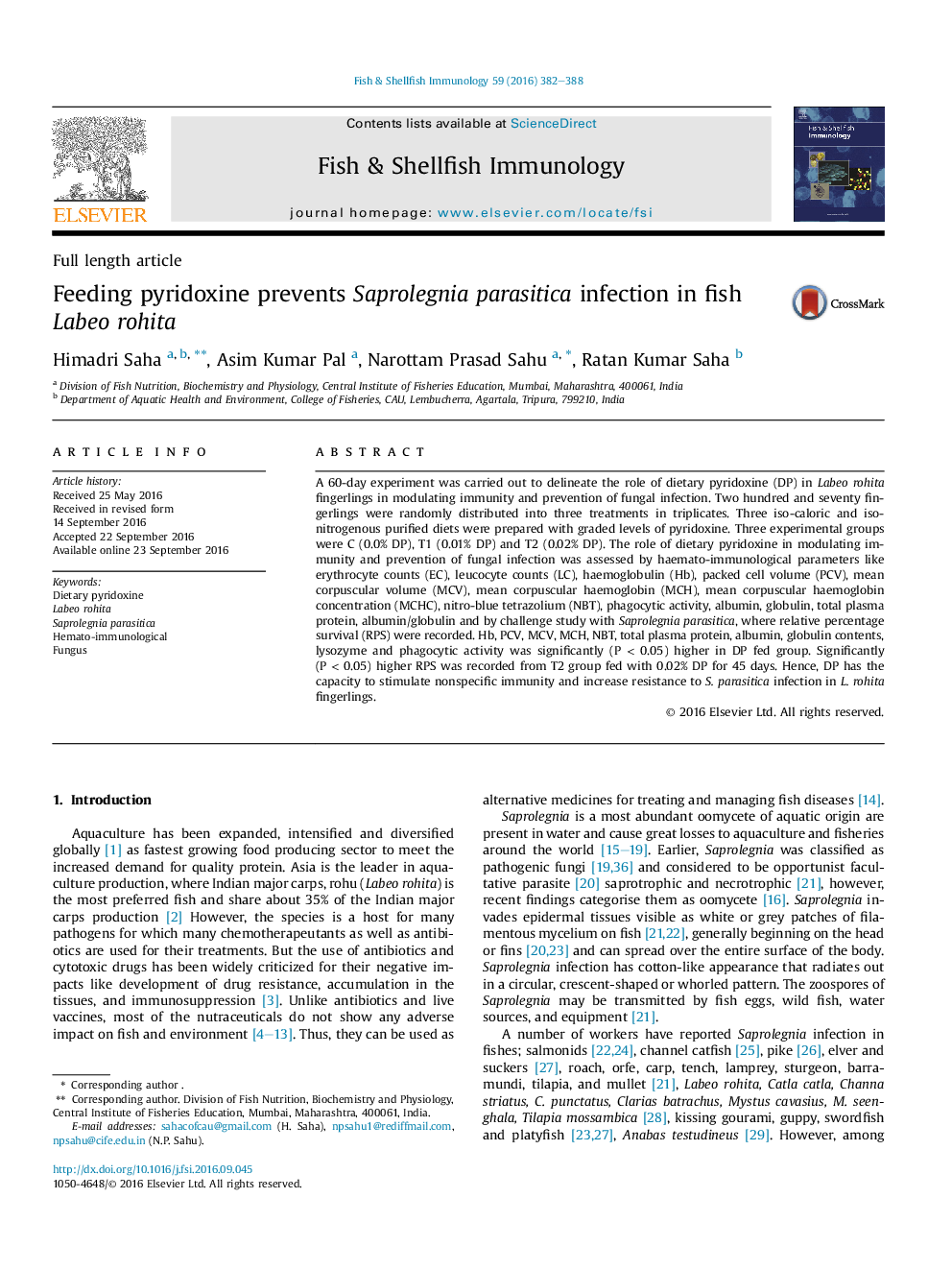| Article ID | Journal | Published Year | Pages | File Type |
|---|---|---|---|---|
| 5540803 | Fish & Shellfish Immunology | 2016 | 7 Pages |
â¢Pyridoxine, a vitamin has the antifungal capacity.â¢Dietary pyridoxine helps fish to fight Saprolegnia infection.â¢It does not have any toxic effect on fish.â¢It is the best alternative of toxic antifungal drugs like malachite green, formalin.â¢It can be used through medicate feed and can cure fish easily in large ponds.
A 60-day experiment was carried out to delineate the role of dietary pyridoxine (DP) in Labeo rohita fingerlings in modulating immunity and prevention of fungal infection. Two hundred and seventy fingerlings were randomly distributed into three treatments in triplicates. Three iso-caloric and iso-nitrogenous purified diets were prepared with graded levels of pyridoxine. Three experimental groups were C (0.0% DP), T1 (0.01% DP) and T2 (0.02% DP). The role of dietary pyridoxine in modulating immunity and prevention of fungal infection was assessed by haemato-immunological parameters like erythrocyte counts (EC), leucocyte counts (LC), haemoglobulin (Hb), packed cell volume (PCV), mean corpuscular volume (MCV), mean corpuscular haemoglobin (MCH), mean corpuscular haemoglobin concentration (MCHC), nitro-blue tetrazolium (NBT), phagocytic activity, albumin, globulin, total plasma protein, albumin/globulin and by challenge study with Saprolegnia parasitica, where relative percentage survival (RPS) were recorded. Hb, PCV, MCV, MCH, NBT, total plasma protein, albumin, globulin contents, lysozyme and phagocytic activity was significantly (P < 0.05) higher in DP fed group. Significantly (P < 0.05) higher RPS was recorded from T2 group fed with 0.02% DP for 45 days. Hence, DP has the capacity to stimulate nonspecific immunity and increase resistance to S. parasitica infection in L. rohita fingerlings.
